- It’s what we do – adventure motorbike magazine
- BMW GS Safari Enduro = adventure motorbikes, news, reviews, publication
- BMW F850GS Rallye X
- Strap Yourself In
- The Dempster
- TomTom Rider 450
- Read Between The Lines
- Locked Gates – motorbike magazine, australian motorcycle publication
- Ural Adventure Ride 2018
- Sri Lanka – adventure motorbike tour, motorcycle magazine
- The Best Job In The World = australian motorbike magazine
- Wet Arses
- Yamaha Tracer 900
- Congregation 2018
- We Didn’t Have PLBs In Those Days
- Sahara To Sunraysia = australian motorbike riding tours news event magazine
- Managing Risk with Miles Davis
- Thinking Big? Start Small with Andy Strapz
- A Precautionary Tale from Karen Ramsay
- Checkout
- Fit out – australian adventure motorbike riding
Miles Davis looks at some key adventure-riding risks and how to best handle them.
A skilled rider has more control.Remember when you first rode and how out-of-control you were some of the time? It’s scary to think learner riders get a licence in Australia with such little training. I wish I had a dollar for every time a mature rider with 10 or more years of experience said to me at a training course, “I can’t believe how much I learned. I wish I’d done this sooner.”
Unless you’re a guru both on- and off-road, consider training and keep improving your skills.
You’ll have more fun and ride better, smoother and possibly faster.
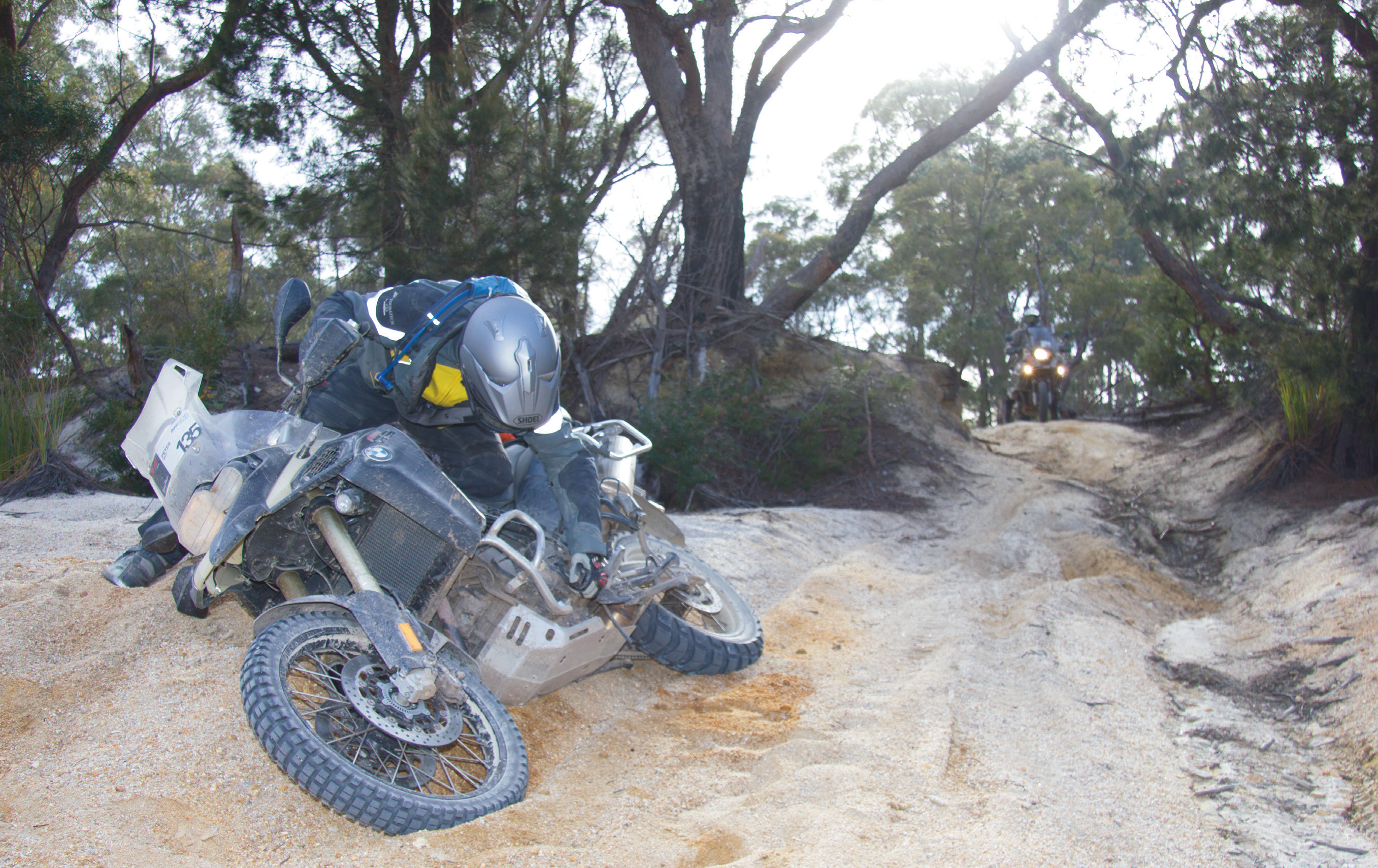
Fitness and fatigue
Riding off-road can be extremely physically and mentally fatiguing. Being less skilful ramps up the fatigue drastically. I’ve seen it many times. Riders get tired, lose concentration, precision and end up crashing. I’ve also seen fitter riders in challenging situations simply keep going and going and come out the other side.
Not enough adventure riders take this seriously.
It’s much more important than the bike you ride or the tyres you use. Have a think about it. Stay hydrated and snack regularly. Personally I find it difficult to ride without a hydration pack. Sipping small amounts of water regularly is the key.
What if?
Some of you ride like you’re indestructible, while others are so cautious they struggle to get some flow. I like to use the ‘what if?’ theory, rather than the ‘assume everything will be fine’ approach.
You can use this for all decisions made on a bike.
Should I overtake? How fast should I go into this corner? I can’t see because of A, B or C, should I slow down?
Your question in all these situations should be should be, ‘What if..?’, and then take action to avoid the possible bad outcomes.
It’s a similar concept to ‘plan for the worst and hope for the best’. A lot of the time it’s this mindset that separates riders who get to the end of each day from those who don’t.
FOMO
Fear Of Missing Out can be a massive trap.Sometimes you make a decision, deciding to go with the A team or the B team. For some it’s clear.
They have what it takes to take on the sand, the hill, the rocks or whatever.
For others it’s clear they shouldn’t, and they’re totally fine with it. For others it’s not so clear. They may be in the middle and have to make a call based on what they know and how they feel. But for others, FOMO puts them at massive risk.
They may not have the skills and/or experience and/or fitness to take on the challenge, but they just don’t want to miss out.
And for them, sometimes they also get an ambo, helicopter or RFDS ride as an added bonus.
Be realistic about your stats and know how important it is to have a beer in your hand at the end of the ride, rather than a green whistle in the ambo.
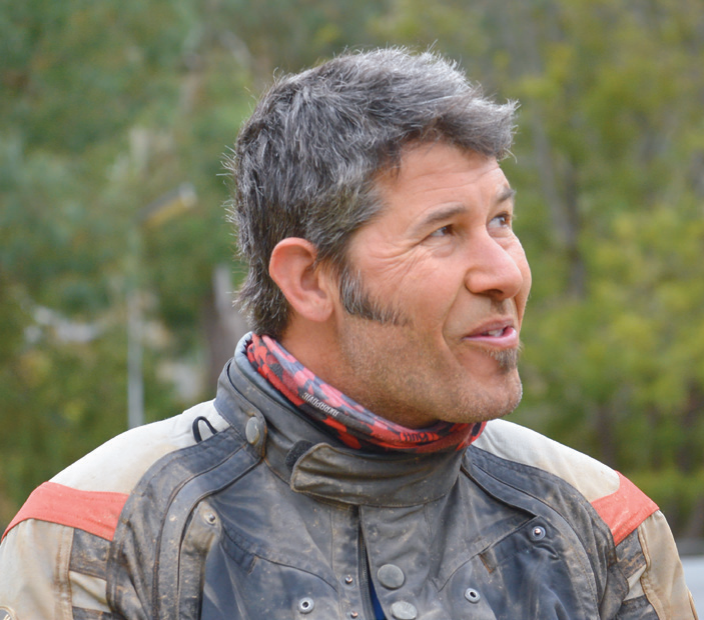 Miles Davis
Miles Davis
Wildlife
If you’ve never hit an animal, you probably don’t know how easily and suddenly it can happen.
Personally I think this is possibly the biggest risk for riders in Australia. I hit a big emu on the road at over 120kph.
It was messy and quite scary. Since then, when the bush screens my vision, I bring the speed down and cover my brakes as if I’m expecting something to appear.
Often at those times a rider will go past me at pace, and I can tell who has and who hasn’t had a wildlife incident.
Be aware of your surroundings and try to be at a lower speed when the shit hits the fan.
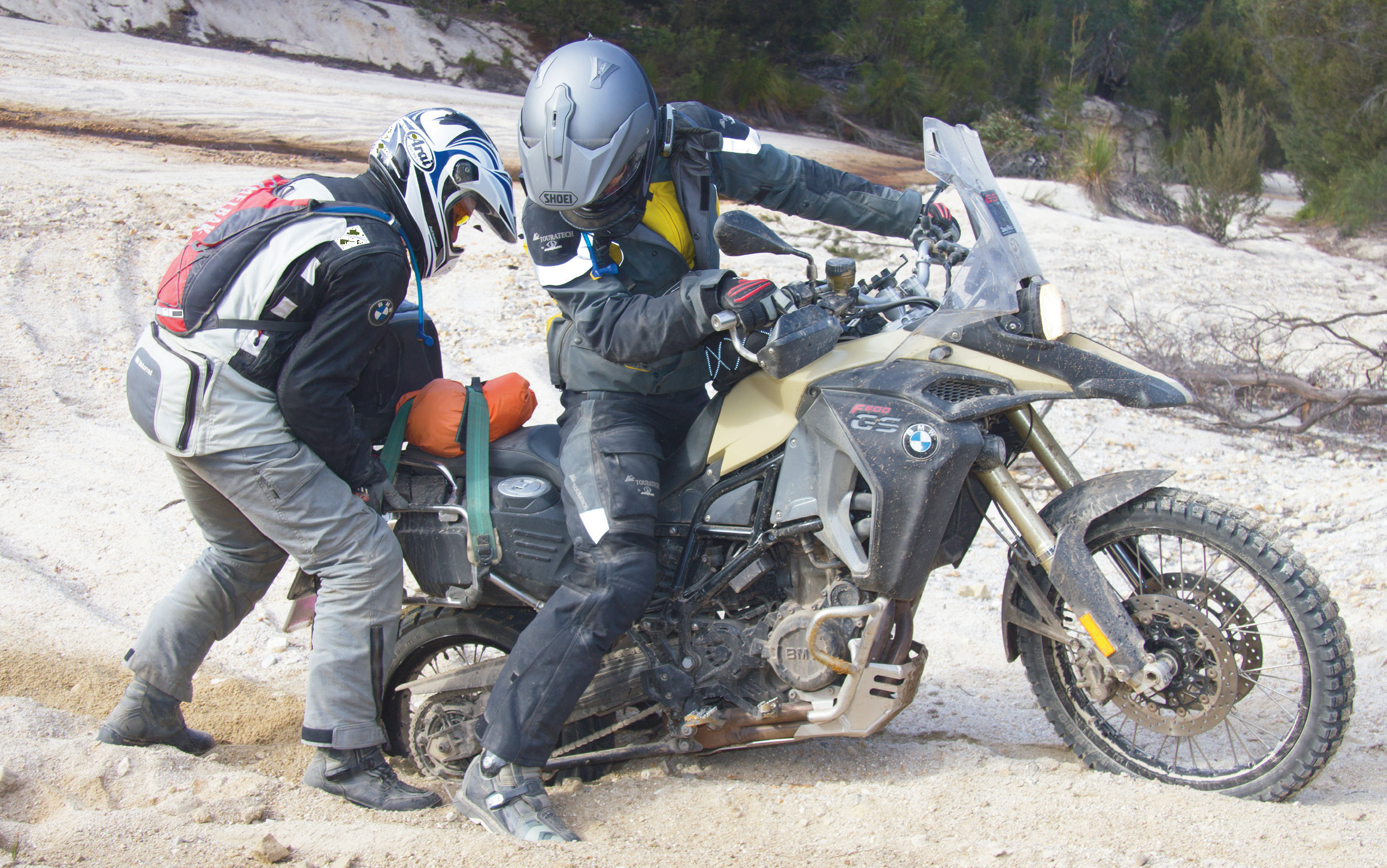 Not having the skills and/or experience for a section, but not wanting to miss anything, can put riders at risk.
Not having the skills and/or experience for a section, but not wanting to miss anything, can put riders at risk.
Head On
It really freaks me out how so many riders apex blind right-hand corners. On the road a white line down the middle makes it pretty clear what side to be on, but off-road, or on smaller country roads without lines, it’s up to the rider and driver to figure it out, which doesn’t always work.
Keeping left is something so simple and so obvious. You’d think riders would strive to keep left considering the consequences. It’s simple: on blind right-hand corners, ride the left tyre track.
For sure you might need to slow down to achieve this, but it’s better than becoming part of a bullbar. Once you get used to it you realise how much better and safer it is. You get to see around the corner earlier, and when a ute appears you feel pretty good about it. My tip is to imagine a Landcruiser appearing at the apex of every blind right-hander and to be in a position, and at a speed, where you can deal with it.
The kitchen sink
A fully loaded bike can be a dog to ride off road.
If your adventure is more highway-based or if you have a pillion, panniers might be an option. But if you’re planning riding off-road with the occasional spicy section, a bike with less luggage is much easier to handle. There are things you definitely need, so make sure your priority list is in the right order. If you’re riding in a group, try to share some items like tools and spares.
Adapt and overcome
It doesn’t matter who you are, you need to be aware of the weather and general conditions and consider adjusting your ride to suit. Some tracks and terrain are not so affected by rain, while others can become unrideable with even a small amount of moisture. Be prepared to adjust when required.
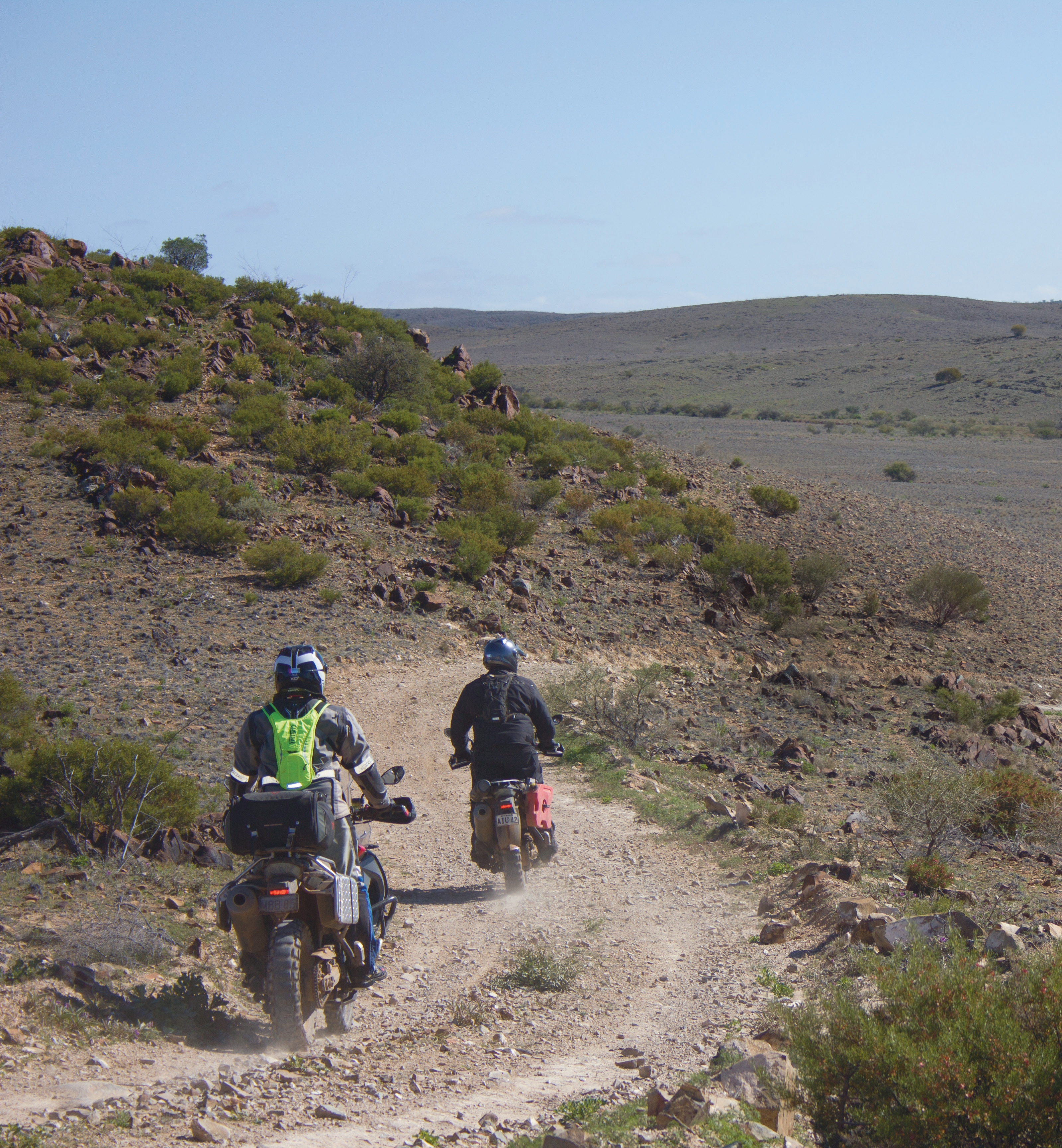
The good gear
Don’t get caught out with the wrong type, or cheap and nasty, riding gear.It can be tempting to wear the light-weight, comfortable gear in summer, or cheap riding gear to make a budget.
But if you come unstuck on the road for any reason you might lose skin and get unnecessary injuries. The things to consider are abrasion resistance and impact protection. The good gear costs, but it can make a huge difference if you have an accident.
Vision
Make sure you have a solid plan when it comes to vision. There are lots of choices, but I always see riders get caught out and not be able to see well.
Things to consider are visor versus goggles, clear versus tinted and anti-fog systems, especially in colder climates.
For most riding my ideal set up is an adventure helmet with a peak for sun protection, a clear visor for wind protection and a retractable, tinted sun visor for easy adapting to light and shade. In colder climates the clear visor would have a Pinlock fitted which makes it virtually fogproof. On top of this I always travel with a pair of lightly tinted goggles in case it gets very hot or dusty.
Good vision in challenging conditions is a major advantage. When you can’t see, it sucks.
On top of this, when riding in dust you need to manage the gap to maintain clear vision. If you ride too close in dust your risk goes through the roof.
Riding in clean air is much more fun and much safer.
Finally
Don’t get caught out trying to keep up with faster riders. Ride at your own pace and you’ll be much safer. Don’t stress about holding up your group. They would much rather wait a few minutes to regroup than wait for an ambo because you were riding outside your comfort zone.
Give yourself challenges, but make sure they’re realistic. Build up gradually, gain confidence and experience without too many mishaps along the way.


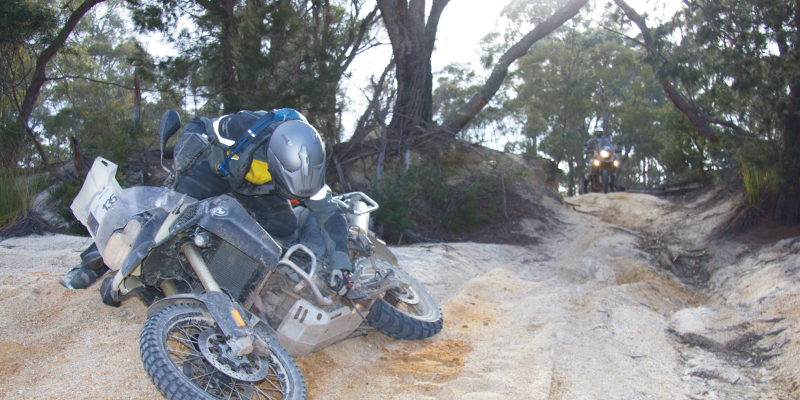

















Comments